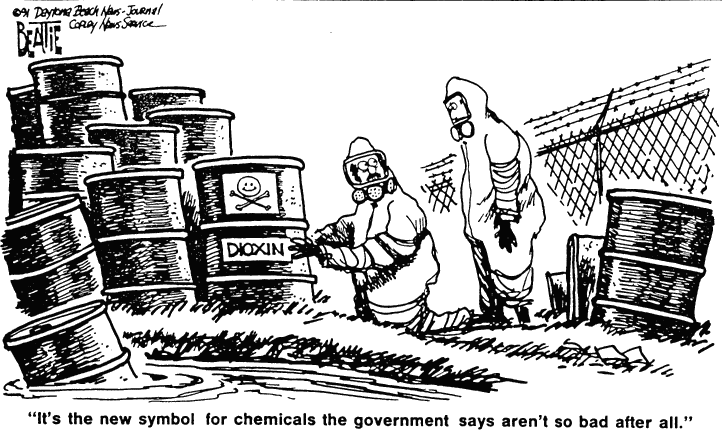
Volume 4, Number 5
Nov 1991
New Balance of Opinion on Dioxin
- William Reilly, chief of the Environmental Protection Agency
(EPA), announced recently that it was time to take a second look at
the straight-line model on which the EPA's toxic risk estimates are
based. Evidently he had been listening when a majority of the dioxin
researchers and regulators at the Banbury Center conference in
October 1990 had favored less rigid standards (APA,
1991, p. 18; for background information see p. 57 and 65 in the 1990
volume).
This willingness to reconsider has alarmed Greenpeace, according to
an article in the May/June issue of its magazine of the same
name.
In this article, Greenpeace denigrates the "fake consensus" reached
at the Banbury conference and re affirms its intention to work for
total elimination of chlorine and chlorinated chemicals in order to
protect the environment from dioxin. "These are serious changes that
will not come easily... but focussing on lengthy disputes over
science and risk assessment has diverted time and money from action
and jeopardized public health" ("The Dioxin Deception," by Joe
Thornton, Greenpeace, May/June 1991, p. 17-21). The
author deplores the fact that EPA is allowing states to relax their
standards, and regrets that seven states have already done so.
- Science published a well-balanced, readable summary
of the Banbury Center conference, describing reactions to it and
reporting a related NIOSH study and three Monsanto Corp. studies of
exposed workers in its February issue, on p. 624-626. According to
this summary, the new view of dioxin is still controversial, but a
consensus based on recent knowledge is emerging. Whether regulatory
policy will change to reflect the developments in science is not
known yet. (Thanks to Nelson Eldred, who recommended this paper
because of its impartiality.
- Finally, there is the cartoon by Beattie, which by R. appeared
in the Provo Daily Herald August 22. It is reproduced here by
permission of Copley News Service, not as a statement of editorial
opinion, but as a demonstration that it is now possible to laugh
about this issue.

![[Contents]](/byorg/abbey/ap/img/contbtn.gif)
![[Search]](/byorg/abbey/ap/img/srchbtn.gif)
![[Abbey]](/byorg/abbey/ap/img/abbbtn.gif)


